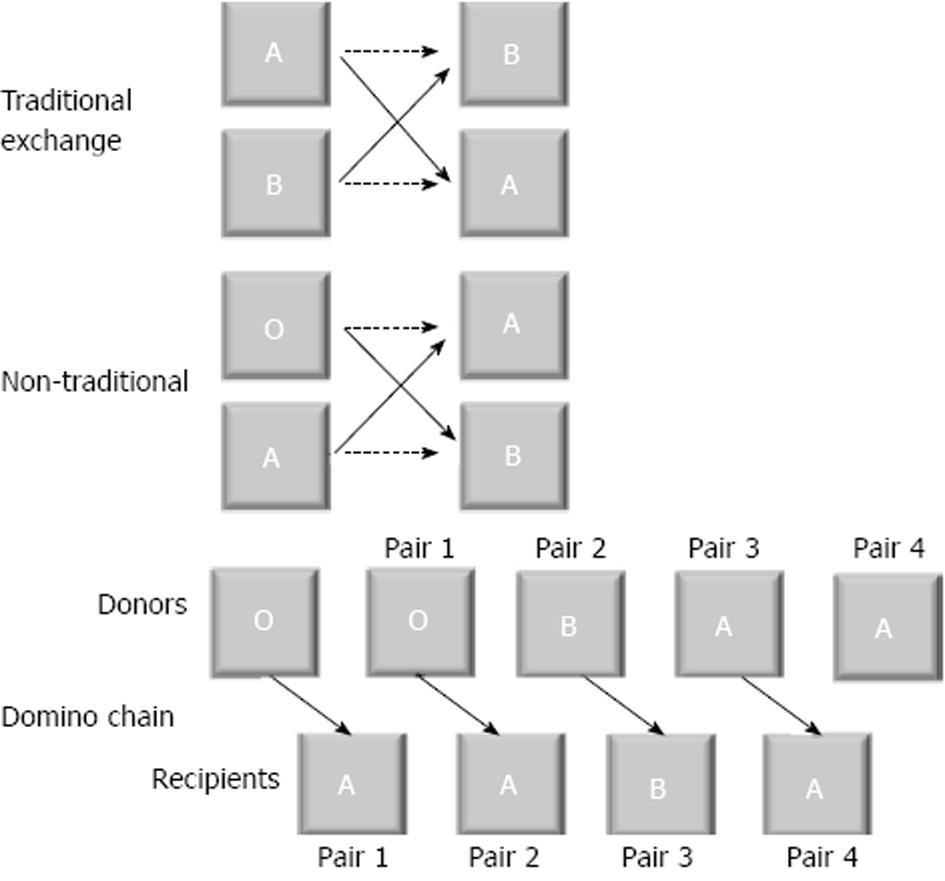Copyright
©The Author(s) 2015.
World J Nephrol. Jul 6, 2015; 4(3): 354-362
Published online Jul 6, 2015. doi: 10.5527/wjn.v4.i3.354
Published online Jul 6, 2015. doi: 10.5527/wjn.v4.i3.354
Figure 1 Desensitization protocols.
A: The NIH Ig02 trial administered intravenous immunoglobulin (IVIG) in four monthly doses for patients awaiting a living or deceased donor transplant. This was followed by a living or deceased donor transplant once an acceptable crossmatch was achieved; B: Johns Hopkins University used a combination plasmapheresis (PP) with low-dose cytomegalovirus immune globulin following each PP session. The number and frequency of the PP sessions is dependent on the donor specific antibody titer. A living donor transplant occurs when an acceptable crossmatch is achieved. Additional sessions of PP/IVIG are administered after transplant; C: A modified protocol combining IVIG and rituximab was developed at Cedars-Sinai Medical Center. Two doses of IVIG are administered one month apart with one dose of rituximab given in between. A deceased or living donor transplant then takes place when an acceptable crossmatch is obtained.
Figure 2 ABOi protocols.
Successful ABOi transplantation has been achieved through various protocols around the world. These four protocols all contain the critical components of ABOi desensitization: antibody removal, pre-transplant immunosuppression and B cell depletion. Many protocols also use immune globulin. Rit: Rituximab; Tac: Tacrolimus; MMF: Mycophenolate mofetil; CS: Corticosteroid; DFPP: Double filtration plasmapheresis; PP: Plasmapheresis; CMVIg: Cytomegalovirus immune globulin.
Figure 3 Paired kidney exchange paradigms.
Traditional exchange: This exchange swaps two ABO incompatible pairs so that new donor recipient pairs are now ABO compatible. Non-traditional exchange: This exchange uses one human-leukocyte antigen (HLA) incompatible pair and one ABO incompatible pair and trades for two HLA compatible and ABO compatible transplants. Domino chain: This chain starts with a non-directed donor. The recipient of this kidney then has their donor available for another recipient. This occurs progressively until a donor cannot be matched. This donor can act as a bridge to a new chain or can donate to the deceased donor waiting list, thereby ending the chain.
- Citation: Wongsaroj P, Kahwaji J, Vo A, Jordan SC. Modern approaches to incompatible kidney transplantation. World J Nephrol 2015; 4(3): 354-362
- URL: https://www.wjgnet.com/2220-6124/full/v4/i3/354.htm
- DOI: https://dx.doi.org/10.5527/wjn.v4.i3.354











